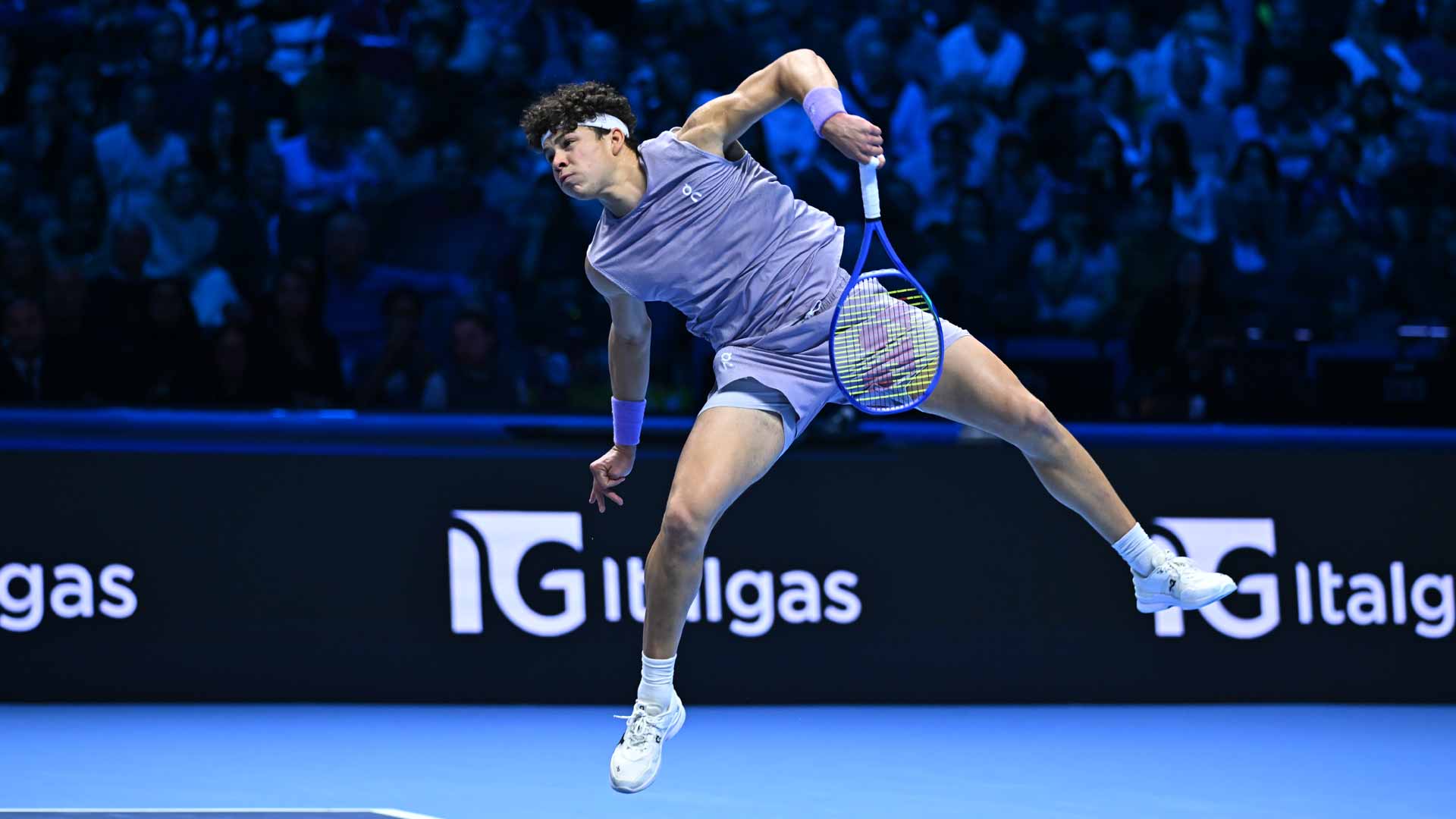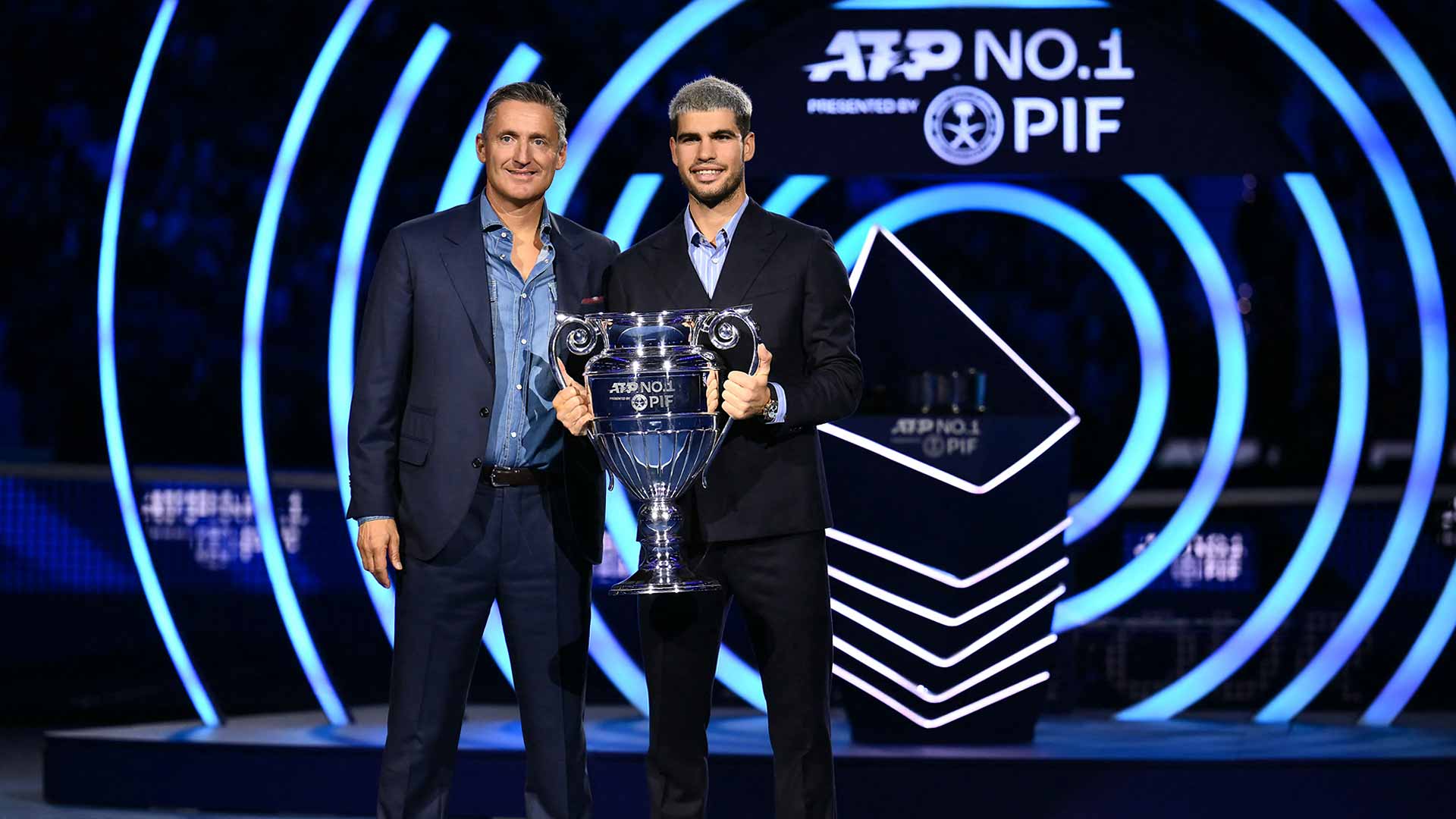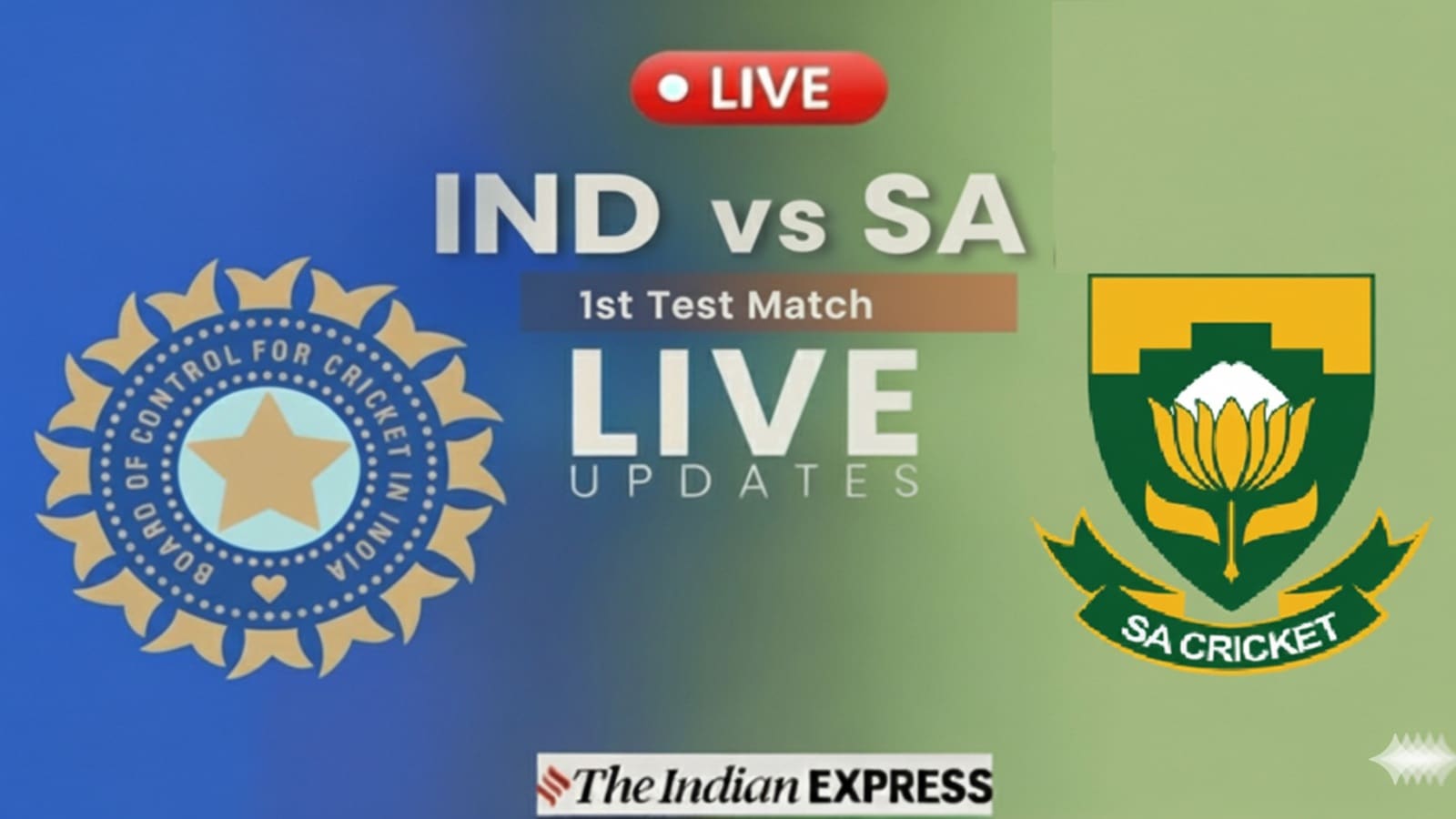Andrea Gaudenzi Q&A at the Nitto ATP Finals

Gaudenzi speaks to the media in TurinCorinne Dubreuil/ATP TourATP Chairman Andrea Gaudenzi speaks in Turin, home of the Nitto ATP Finals. By ATP StaffATP Chairman Andrea Gaudenzi spoke to the media at the Nitto ATP Finals on a wide range of topics.This Q&A has been excerpted from the press conference, and has been edited for brevity and readability.Nitto ATP FinalsQ. This is the fifth year of the Nitto ATP Finals in Turin. What has been your impression of the event so far?Overall, it’s an amazing edition. We started with COVID, which wasn’t easy, but every single year the event has improved. Kudos to the FITP, they've done an incredible job. I think we were all a bit anxious post London, because London was a great event. I think we've delivered, and we are above the expectation we had initially.This one is particularly exciting because we have the No. 1 at stake. It’s super exciting to have the best players in the world fighting for the No. 1 at the end of the year. This is probably the best possible outcome. It's great for the fans.Q. Will the Nitto ATP Finals stay in Turin until 2030?There hasn’t been a decision yet. We’re super happy here. That’s obviously a consideration we need to take into account. We've agreed to sit down with the FITP and have a conversation early next year.CalendarQ. There’s been a lot of debate about the content of the ATP season with the topic now returning to lower-ranked tournaments like the Challengers and ATP 250s. How do you see the future of the ATP 250 series, especially now we’ve decided to remove the week of Metz and Athens?Tennis is a very difficult sport to schedule, probably the hardest, for a simple reason: it is direct elimination.For example, in a Grand Slam or a 12-day event, a player can play one match, or they can play seven matches over 12 days. Look at golf, for example, the top 60 play the 72 holes over four days.You have Carlos and Jannik playing, I would say, around 80 matches within 18, 20 tournaments. The lower-ranked players play a lower number of matches within 30, 35 tournaments.In reality, you have four, five calendars within one calendar. Half of the players lose first round, and 75% are done by the second round. For most players, it is a two- or four-day event. For others, it's a longer event. This highlights the complexity of the calendar.Obviously, there is a cohort of players saying it is too much. For others, if you remove events, it becomes too few because they need to play. If you lose, you have to go to another tournament and play more matches. That's why we have the different tiers and categories: Grand Slams, Masters, 500s and 250s.We try to balance it for all cohorts of players, including challengers, because these events are also very important for the pathway and to build the champions of the future.In the last few years, we've had a strategy of reducing the number of 250s. We are down from 38 to, I think it's 29. The target to optimize the calendar for '28, when the new Saudi Masters will come on board, is to continue to reduce the number of 250s.250s are very important. Every category is important. But we had too many of them. It was really difficult to schedule within the calendar.We have two problems. The year has 52 weeks and we're not going to change that. The other thing is that players need a proper off-season. At the moment the off-season is a bit too short.You need to be able to rest, take a holiday, rebuild your body, restart practicing tennis, then you move into the Australian season.On top of that we add in the complexity of having seven entities participating in this effort. The four Grand Slams are individual. They have their own dates. Then you have the ITF with the Davis Cup format that has been changing quite a bit in the last few years. You obviously have the ATP and WTA.If you think of the overall picture, I have sympathy from a player standpoint. You’re dealing with seven entities managing a calendar, seven boards making decisions. So, it's difficult to have a streamlined effort, which is at the core of the OneVision plan, where you try to unify the governance and try to come up with an ideal, or next-best option of an ideal calendar.Overall, our strategy has been clear to focus on the premium product, the Masters. The reason for that is simple: we need to provide the best possible experience to the fans. The fans love to watch the best players in the world playing against each other in the best events. The four Grand Slams, the Masters and the Finals are the moments where we get to see this.Then you have the 500s and 250s where those who play less matches in the Grand Slam and the Masters need to play to keep their level up and improve.It's complicated. I have sympathy. For example, Carlos and Jannik have been reaching the final of every Slam, playing very well at the Masters. For those players at the very top, it's probably very difficult to play a full calendar.Another problem we have is that we have an open system where players are independent contractors. We have rules and incentives, we try to influence their behaviour, but ultimately a player chooses where to play. They can prioritize a 250 over a 500, a 500 over a Masters. Players often play in lower categories, and in team events and exhibitions outside of our system.It’s a complex problem to solve. I don't think there is one solution that fits all. I believe strongly that if everyone was around the same table - Grand Slams, ATP, WTA, ITF - in one room, with one board, one governance, we would do a much better job than we are doing today.Q. How would you have felt, if when you were a player, the number of 250s was being reduced, making it harder for you to advance to the 500s or 1000s?You can't increase the 250s and expand the Masters at the same time.In my career, I was never one of those guys who went deep into the second week of the Grand Slams and Masters.Firstly, I was really frustrated by the fact that, even when I was ranked 50, 55, I could only play the main draw of two Masters, Indian Wells and Miami. You end up being 50 in the world and you couldn't access the premium tier. I thought, why can I play in a Grand Slam main draw and not a Masters main draw? If we have this, we want all the top players playing.Hence why I think it's very important to move to a 96 draw. You provide Top 100 players with the possibility of playing main draw in Grand Slams and Masters on at least seven occasions out of nine. The exceptions are Paris, Monte-Carlo, and Saudi will be the same.In terms of the 250s, I made a lot of mistakes in my career. I often played 250s on clay in Europe the week before the US Open. They were scheduled there, there were swings almost everywhere, tournaments all over.I learned, improved my behaviour, and realised I was responsible for my own calendar. It was as a little bit of self-discipline. I saw other players who played a smart calendar, who weren't really attracted by the opportunity for guarantees.I don't think players should schedule with guaranteed money as a priority. Players should be playing for ranking points and titles, especially those in the Top 50, Top 100.The number of 250s is not going to be a problem because our plan is to have exclusive, dedicated category weeks. 10 weeks of 250s, eight weeks of 500s, that's 18, then the 10 Masters, that's 28, then the four slams, 32. This is the goal.This really serves all the Top 100. If you're at the top, you probably just play Slams and Masters, and a few 500s. If you're lower in ranking, you play more 500s and 250s. If you are lower in ranking, you play 250s and Challengers. It's a pyramid. The lower your ranking, the lower you play.If you're high in the rankings, in my opinion, you shouldn't be playing down. If you're Sinner or Alcaraz, you have no need to play the 250s for money, because it doesn't fit within your ranking, and it's not your level. When you're winning Slams and Masters, you should be playing up.In Formula 1, for example, a driver is not allowed to race in a lower category. They try to protect their talent. But they have a different system.Q. Players continue to complain about the Masters 1000s with the extended number of days. Jack Draper called all the Top 20 players, and I don't think there was a very positive response to these extended events.On the 12 days' expansion, I haven't really invented anything. Indian Wells and Miami were there for 35 years. I came in, I looked at the numbers, and I could see these tournaments were really outperforming the others.Why are the Slams so successful? Two reasons: incredible infrastructure, and history, the brand. They have big stadiums, and they technically have three weeks, 15 days of main draw plus quallies.As a sport, we are low in media and very heavy on ticketing for many reasons, one being fragmentation. Ticketing revenue is above 50%, 60%. Compared to other sports, media is probably 60%, 70% of their revenue breakdown.2025 was year three of the OneVision plan, but in year one of the expanded Masters, you can already see the results. If you look at the top-line revenue, which I cannot disclose, it's going up very high. It's changing a lot.Thanks to the profit-sharing formula the players now have, we paid out almost $20 million in 2024, up from $6 million in 2023. That represents 25% on top of prize money, which was also increased.This means the total profit of the Masters is close to 110 million, 109 million. The way the profit-sharing formula works – you take the profits, deduct the base prize money, and share the excess.Simplified, this is working from a financial standpoint and providing a lot of value to all players, because that money goes to the whole ecosystem, including the players ranked 100, 150.I always knew that the 12-day format would probably not be well received by the top players, because they are the ones who need to arrive a few days early. I have a lot of sympathy for the fact that they are the ones who also stay late. They are really the ones affected by the 12 days. All other players, they lose early. Even in the quarterfinals, there’s not much of a change.I think we need to be a few more years into the plan or we need to shift more compensation to the top players to reward them for the value they're driving. It also becomes a debate around compensation per day. It’s simple mathematics. The players probably look and say, I could be making ‘X’ in an exhibition for one day. If I go there, I make ‘X’ divided by 12 days. That’s the issue at the moment.Again, I want to be very clear. I don’t believe a perfect product exists. All I believe is we've started with an assumption, we need to give it a few years to see if it works, then we can review and decide whether to go backwards or continue.We also need to look at all aspects, because the 12-day format was achieved as part of a deal which included tournaments agreeing to open their economics to the players. Just to be clear, for 35 years the players had no access to the economics of the tournaments. They had no clue how much money we were making.It's like saying you and I have a 50-50 partnership. You make $100. You ask me how much I make. I tell you, sorry. Now the books are open. Players have full benefit. They are now equity partners. So that was a compromise.The other compromise was the aggregation of media. There are a lot of things that we've done that will benefit the entire ecosystem over time. All I'm asking is be a little bit patient because I think it will deliver value. The second ask, try to manage your schedule slightly differently in the other tournaments that you play.Yes, we've added in the Masters 1000 category, but if you take away from exhibitions or lower category tournaments that you play, I think you're going to be fine because it is a matter of the balance between the two.Q. Do you have an ideal number, in your mind, of weeks you think the off-season should be in tennis?I don't know if there's an exact number. Some players would say six, some say seven, some say eight. Surely a player needs one or two weeks off, then one or two weeks to start building their body, then they pick up the racquet again. I think it definitely needs to be longer than what it is today.Then the question is, for who? I played the Davis Cup Final once in my career. That was the only time where I had to wait for that. Otherwise, players like me would be done after Paris.Obviously the top eight finish later. Now the Davis Cup format means players who lost in Paris have to wait until after the Finals for that event.I love the Davis Cup. I probably had the best matches of my career there. I think it's an incredible asset. We should all come together to try to make it the World Cup for tennis.I think the best product is the home and away. The Final I played in Milan is probably the best memory of my career. You go to cities where we don't take tennis with the Tour. I played quarterfinals against the U.S., Agassi-Sampras, in Palermo. Regardless of which players you have, you're going to have a full stadium cheering for your country. That atmosphere for me is the core of our product.The problem at the time was playing it every year and on different surfaces. One year we played the Davis Cup against the Czech Republic in Naples. We won. On Tuesday I had to play on hard court in Dubai. It's challenging.In the ideal world I think Davis Cup could go home and away over two years. There is no World Cup in sport that happens every year, to my knowledge. I think it would be better for the product and would also release a lot of pressure from the calendar.Last but not least, there is the difference between finishing the season in Paris and the Finals. That is where I think the beginning of the season comes into play. I don't know the stat top of mind, but I believe Novak won the Australian Open seven times without playing anything prior to that. Jannik won the Australian Open without playing anything. For those guys, winning at that level, you have the flexibility to do that. You don’t have to play week one and two.If there is no Masters, that's where you create your own flexibility. If you go too deep and play more matches than others, that's when you have to say, stop. That's why we're going to look at '28 in trying to keep that in mind.I do believe players need at least seven weeks off, I would say, in the off-season.GovernanceQ. What are the latest movements of the top players with the Grand Slams? How does it affect their relationship between the ATP and the wider ecosystem?I'll go back to One Vision, the plan I laid out in 2020 when I started.There are obviously flaws in our system because of the legacy of having four independent Slams, the ATP, the WTA, and the ITF.The Slams, and I want to make this very clear, are the best tournaments in our sport. They are incredible assets. The Slams are probably the best way to showcase our sport. I thank them immensely for what they have done and what they're doing. As a player, you grow up dreaming of being in a Slam. Probably the main two goals are becoming No. 1 and winning a Slam.In the ATP, 50% of the governance is players. Every decision we make, we need the approval of the player board representative that gets elected by the players council, which is 10 players representing the wider group. So, it is a very democratic environment.Obviously, you have four independent entities. Maybe that's to a certain extent an advantage because you just do things and you don't have to ask everyone permission.On the other hand, if you look from a player perspective, players have no representation. We have a formula which is very transparent to the players. They deliver value, they gain more value. All they're asking for generally is fair representation and fair compensation, whatever that is. Maybe the level is already right, but they just don't know and they don't feel they're heard. I think that's a fair ask.That is the goal of OneVision. To get everyone in one room, players, men and women, equally represented, then the Grand Slams, Masters, 500s and 250s. Everybody needs to be at the same table because we are talking to the same people. I’ve said many times; it's like writing a book and the chapters are written by different writers and sold in different bookstores. It's not optimal.






.jpg)






